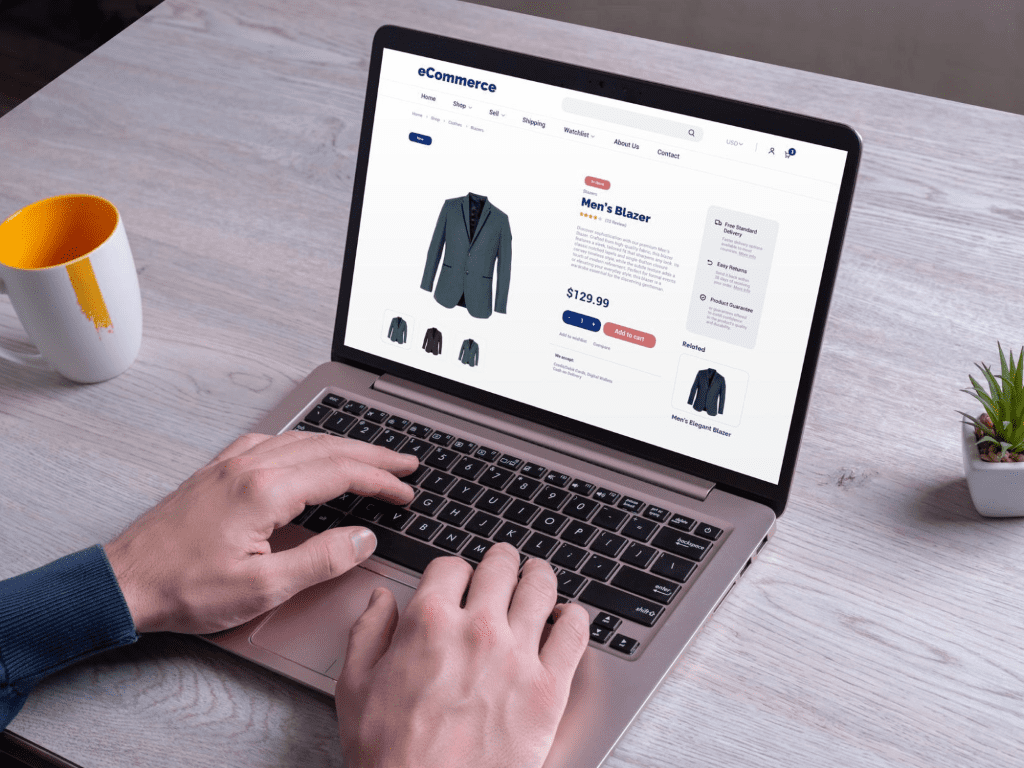
More than just a question of taste, selecting the ideal theme for your online business is an important choice that will have a direct influence on consumer satisfaction and, eventually, sales. Choosing the ideal theme will improve user experience, maximize functionality, and complement your brand identity in addition to providing a stunning display of your items. This tutorial will help you choose the ideal theme for your online store, guiding you through every step of the process and making sure you make a decision that will help your company succeed.
Recognizing Your Brand Each brand tells a tale. The subject of your online business should, in both its appearance and operation, evoke the spirit of this tale. Your theme should be consistent with the essence of your company, whether you are a specialty shop selling vintage treasures or a high-end jewelry merchant. Think on the colors, logo, and feelings you want your customers to associate with your brand. All of these components will be expertly integrated by a well-selected theme to provide a unified brand experience.
Examining Who Your Target Market Is Your choice of theme should be strongly influenced by the tastes and online purchasing habits of your target audience. Expectations will vary among different demographic groups. A younger, tech-savvy audience, for example, would value a sleek, contemporary design with lots of interaction, yet an older audience might value simplicity and ease of use. You may learn more about your audience’s device choices, surfing patterns, and even how they typically navigate websites by using tools like Google Analytics.
How Both Should Be Reflected in Your Theme Your choice of subject will be influenced by how your audience’s demands and your brand identity connect. For example, if you are a contemporary fashion retailer catering to millennials, you should consider using a theme that works well with Instagram feeds and allows for high-quality pictures. On the other hand, a simple, minimalist theme that emphasizes product quality and information can be more suited if you are offering high-end items to a more affluent clientele.

Navigability Made Easy
Customers should have no trouble finding what they’re looking for using your theme. Intricate or counterintuitive navigation can cause annoyance and raise bounce rates. Seek themes that accommodate many navigation styles: a thorough footer, sidebar categories, and horizontal top menus. By having navigation choices close at hand, features like a sticky header—which stays visible as the user scrolls down—can greatly improve the user experience.
Product Presentation and Characteristics
Buying decisions may be influenced by the way items are presented on your website. Zoom capabilities, fast view options, and high-quality photos assist buyers in making knowledgeable decisions about your items. Think about themes that let you highlight many photos for each product and that offer a simple structure for showing different product variations, such as material, color, and size.
Cart and Checkout Procedures
To close sales, a seamless, trouble-free checkout procedure is essential. Your theme should make it easy to move from choosing a product to finishing the transaction. Choose a theme that can be customized for your checkout and shopping cart pages, works with many payment methods, and preferably has features like guest checkout, user data saving for next visits, and security badges to reassure visitors.

Unlock a world of benefits with our premium subscription! Get instant access to exclusive content, special discounts, and a supportive community.
The Value of Quick Loading Times
Additionally to improving user experience, a website that loads quickly plays a role in search engine optimization. Fast-loading websites are favored by Google and other search engines. Your site will load much faster if it has themes with optimized code, reduced CSS and JavaScript, and support for cutting-edge performance strategies like lazy loading for pictures.
Features that are suited for SEO
The SEO of your website is greatly influenced by the theme you choose. Semantically marked HTML themes with support for meta tags are what you want to look for in a theme. To improve your exposure even more in search engine results, themes ought to work with popular SEO plugins.
Acceptance of Major Browser Compatibility
Make sure your theme is optimized for all the major browsers, such as Microsoft Edge, Mozilla Firefox, Google Chrome, and Safari. Regardless of the browser a potential consumer uses, cross-browser compatibility makes sure they have a good experience on your website.
Your views should be substantiated in each of these chapters with concrete examples, theme settings pictures, and maybe even some video tutorials or case studies. Your material will be richer, more helpful, and interesting for your viewers as a result of this meticulous approach.

Options for Customization Without Coding
Selecting a theme that lets you alter key components like colors, fonts, and layouts without having to write code is crucial because not every online retailer manages their own website. Use plugins such as the WordPress Customizer, or search for themes that include an integrated customizer. You may easily customize your website to reflect your brand identity with the aid of these real-time preview tools.
The accessibility of add-ons and plugins
The ability of a theme to work with different plugins and add-ons can increase its functionality and support company growth. For WordPress sites, for instance, connection with WooCommerce is essential for e-commerce capabilities. Customer relationship management (CRM) systems, SEO tools, and email marketing tools might all be additional helpful plugins. Make sure the theme you choose is compatible with the plugins that are necessary for running your company.
Adaptability to Grow with Your Company
The theme you choose from the start should be scalable, able to accommodate both your present requirements and your potential expansion. Think about themes that come in many versions or that can be readily changed to provide more functionality as your company expands. For themes to be compatible with the newest web standards and technologies, their developers should also maintain and update them often.

The quality of customer service
The amount of time it takes to fix any problems that may develop with your theme may be significantly decreased with excellent customer service. Seek for themes that offer thorough assistance via email, live chat, forums, and other channels. Before making a purchase, check the theme’s support team’s responsiveness by reading customer reviews or contacting them for pre-sales assistance.
Regularity of Maintenance and Updates
Your internet shop must adapt to the constant changes on the internet. To address issues, include new features, and maintain compatibility with the most recent iterations of the underlying software platforms, pick a theme that receives regular updates. Frequent updates guarantee that your website is operational and safe, safeguarding the interests of both you and your clients.
Community and Accessibility of Resources
There are active user communities for some topics, which may be quite helpful. These groups often exchange adaptations, work together to solve problems, and offer guidance on best practices. A theme with tutorials, instructions, and a comprehensive knowledge base may also help you maximize its capabilities.

Examining Testimonials and Reviews
Testimonials and evaluations from users shed light on a theme’s usability and performance in the real world. Seek out themes that have a lot of good ratings and take note of how customers express their satisfaction with the features, support, and general usefulness of the theme.
What to See in User Reviews
Look for recurring themes in evaluations that may point to systemic flaws or virtues. Recurring complaints about defects or compatibility problems, on the other hand, can be interpreted as warning signs. As an example, numerous remarks on rapid performance or outstanding customer service might be positive indicators.
Deal-breakers and Warning Signs
Themes with very few reviews or a large number of unfavorable reviews should be avoided. Take into account the reviews’ recentness as well as if the theme’s creators regularly reply to criticism. In the review area, a lack of developer involvement may be a warning sign of future subpar customer service.

Narratives of Prosperous Enterprises Employing Your Selected Themes
Showcase a few notable achievements from companies that have used the themes you suggest. Talk about the ways in which certain theme features—like enhanced customer involvement, increased sales, or enhanced SEO performance—helped them achieve success. Potential consumers may see how a well-chosen theme might benefit their business by looking at these real-world examples.
Which Themes Are Employed by Rivals
Examine the topics that your rivals are using and why. This can give firms information about industry norms and assist them in selecting themes that meet consumer expectations. Talk about the benefits and possible pitfalls of utilizing popular themes, such as the risk of seeming overly similar to other websites vs. the great degree of customization choices.
Knowledge Gained from Other Online Retailers
Take advice from other store owners’ experiences. You may talk about a situation, for example, where a company has to change themes to better suit mobile customers or incorporate e-commerce features. Provide statements from entrepreneurs along with their thoughts on what they would change if they were to choose a topic over again.
Unleash your potential with our expert team! We specialize in turning ideas into reality, helping you achieve remarkable results. Connect with us today and let’s create something outstanding together.

Compare Free and Paid Themes
Comparing free vs paid themes, talk about the benefits and drawbacks. Although free themes are frequently less feature- and support-rich, they might still be an excellent economical choice. Premium themes are often more customizable and come with greater support, although being initially more expensive. Offer a comparison so that readers may choose which option best suits their needs both financially and operationally.
Comprehending Pricing Models
Pricing for themes could vary; some might have a one-time cost, while others might be subscription-based. Describe the models’ long-term financial consequences. For example, an online store’s security and functioning may need to be maintained, and a subscription model may provide continuous maintenance and upgrades.
Long-Term Expenses (Plugins, Updates, etc.)
Draw attention to the possible long-term expenses of upgrading and sustaining a theme. Talk about how selecting a theme that needs a lot of extra plugins might make the total cost of ownership higher. Describe how planning for these recurring expenses is essential to maintaining the store’s seamless operation.

Methods for Carrying Out Usability Testing
Describe how to evaluate a theme’s usability in an efficient and effective manner. This may entail putting up a mockup of your business and assigning tasks to prospective customers to do while you watch how they engage. You may track how people interact with your website using tools like Hotjar or Crazy Egg, which can provide you insights into any necessary improvements.
Resources & Tools for Theme Testing
Provide a list of the resources and tools that may be used for theme testing. This might include mobile responsiveness testers, browser compatibility testing tools, and performance testing websites like Google PageSpeed Insights. Describe each tool’s use and how it might be used to evaluate a theme’s efficacy.
Making the Ultimate Choice
After testing many themes, provide guidance on how to make the ultimate choice. Urge readers to consider the benefits and drawbacks in light of their testing findings and professional objectives. Remind them that choosing the correct theme involves more considerations than just looks—it also involves usability, scalability, and usefulness.

The Best Methods for Installing Themes
Provide readers with best practices for installing the selected theme, making sure they are aware of the necessary technical specifications and methods. Mention typical installation problems to stay away from, including not backing up the website before making significant changes.
Getting Ready to Launch
Walk readers through the post-installation setup procedure. This include importing items, arranging payment and delivery methods, and setting up configurations. Talk about the value of a pre-launch checklist to make sure that, prior to going live, all features are functioning as intended.
Post-Launch Advice and Techniques
Lastly, offer advice on how to run the online business after it has launched. Talk about how to keep an eye on site performance, interact with users, and apply ongoing enhancements based on user input and performance indicators.

choosing the ideal theme for your online store is a complex choice that has an impact on all facets of your company. Every aspect counts, from matching your corporate identity to making sure your website is safe and expandable. You will be well on your way to selecting a theme that not only looks fantastic but also successfully promotes the expansion and success of your company if you give each of these factors significant thought.